Janice Steinberg's Blog, page 2
July 14, 2015
Opening the Door to Self-Compassion
 Wherever you go, there you are. Where I have gone is a cottage in Ashland, Oregon. My husband and I are doing a month-long stay here, seeing plays at the Oregon Shakespeare Festival and spending most of our time giving ourselves a writing retreat—I’m partway through a novel, and he’s working on a play.
Wherever you go, there you are. Where I have gone is a cottage in Ashland, Oregon. My husband and I are doing a month-long stay here, seeing plays at the Oregon Shakespeare Festival and spending most of our time giving ourselves a writing retreat—I’m partway through a novel, and he’s working on a play.
Our Ashland home, Quan Yin Cottage, is named for the Buddhist goddess of compassion. It’s at the Ashland Zen Center, and in the two weeks we’ve been here, Zen aphorisms have come to mind. Especially, “Wherever you go, there you are.” I thought of it initially on my second day here, when I was starting an entry in my novel diary. As I typed the date, July 1, I heard the words in my head, “Damn, I’m slow”—a lead-in to saying that I’d hoped, in this precious time I’m dedicating to the novel, the pages would pour out of me, but instead I was proceeding at my usual plod.
Wherever I go, if I try to do any writing, that self-flagellating voice comes along. I’m sure this is no surprise to anyone who writes. Anne Lamott in Bird By Bird, my Bible for writing and life, talks about Radio Station KFKD blasting in every writer’s mind. And a recent “Bookends” column in the New York Times Book Review posed the question: “Is self-loathing a requirement for writers?”
I had gone 900 miles from my home in San Diego, a two-day drive up the entire length of California. And there I was, whip in hand.
This time, though, the words in my head didn’t make it to my fingers. Instead, I wrote, “What if, in this holy place, I accept my process? Accept myself?”
 A word about holy places. I happen to believe places have their own energy, both physically and from what happens there. The Zen Center is relatively small and sits so discreetly on the street that the first few days we kept driving past the entrance; we’ve learned to spot it by the lavender bushes on either side of the driveway. There are three buildings—the main house and behind it the cottage and a craft building—at the front of the property. They’re painted a soft yellow and surrounded by shade trees, bushes, and flowers. Past the buildings are a towering cottonwood (my husband the mathematician estimates it’s 100 feet tall) and a flower garden with daisies, sunflowers, and lots of lavender. Farthest back, you get to berry bushes, mostly marionberries but also some raspberries and a little gold berry, and in a back corner are beehives.
A word about holy places. I happen to believe places have their own energy, both physically and from what happens there. The Zen Center is relatively small and sits so discreetly on the street that the first few days we kept driving past the entrance; we’ve learned to spot it by the lavender bushes on either side of the driveway. There are three buildings—the main house and behind it the cottage and a craft building—at the front of the property. They’re painted a soft yellow and surrounded by shade trees, bushes, and flowers. Past the buildings are a towering cottonwood (my husband the mathematician estimates it’s 100 feet tall) and a flower garden with daisies, sunflowers, and lots of lavender. Farthest back, you get to berry bushes, mostly marionberries but also some raspberries and a little gold berry, and in a back corner are beehives.
All of it is tended with obvious care. The house is immaculate and in good repair, someone has thoughtfully equipped the kitchen with all the basics we need (and a request for a larger salad bowl was met in seconds). And tending the grounds must be part of the spiritual practice: programs were on hiatus our first two weeks, and the only time anyone entered the yard, s/he was coming to water and prune—moving quietly, clearly mindful about disturbing a woman with a laptop.
 Spread through the grounds are inviting benches and signs of devotion: stone statues of Buddha and, in front of our cottage, a serene Quan Yin.
Spread through the grounds are inviting benches and signs of devotion: stone statues of Buddha and, in front of our cottage, a serene Quan Yin.
The goddess of compassion visited me again last week. Late in the day, sitting at the desk I placed in front of the French windows, I was about to write, “Major farting around today.” But I stopped and considered: My novel deals with five members of a family. I had just finished a chapter focused on one family member, and I was pretty sure which one I wanted to feature in the next chapter—Rocky Rochman, the 27-year-old who finds God, which is pretty weird for him and his secular family—but I didn’t know what I was going to do with him. As a way in, I had read through earlier Rocky chapters that day and even found things I liked in them. But I had written nothing. Thus, naturally, the impulse to say I’d been farting around.
I decided to sit back and allow Rocky’s story to emerge. As another aphorism counsels, “Sitting quietly, doing nothing, spring comes, and grass grows by itself.” Then it did. Suddenly I knew Rocky’s next step into the waters of belief—he’d start to go by his Hebrew name, which was … I Googled and found a name that so tickled me I laughed out loud: Nachman. I loved the silliness of “ Nachman Rochman.” Plus, that name would connect Rocky to the revered Hassidic Rabbi, Nachman of Bratzlav. And in the next few days, Rabbi Nachman references appeared like gifts from the universe; I went to a class where the teacher quoted Nachman and to a service where the prayerbook included Rabbi Nachman’s Rules for Joy. For instance, “Nothing is as liberating as joy. It frees the mind and fills it with tranquility.”
Which brings me back to self-compassion. Happy as I am that, after I refrained from beating myself up, the juices started flowing, the important shift wasn’t the flood of ideas. It was that I treated myself with respect and kindness.
Wherever I go, there I am. But maybe being in a familiar place brings out only the most familiar parts of myself, and it took coming here to find my inner Quan Yin. I hope she’ll make the journey home with me.
January 7, 2015
Reading with Reverence – A Subversive Act
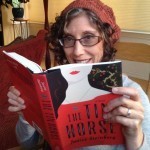 In honor of my birthday today, I want to share a wonderful, healing gift that I received.
In honor of my birthday today, I want to share a wonderful, healing gift that I received.
I recently met a very wise woman, Lori Thornley, who told me about the respectful, holy way in which she approaches a new book—a practice I think of as “reading with reverence.”
When Lori picks up a book in a bookstore or library, she begins by looking at the cover art and the author’s name. For a children’s book, she also looks at the name of the illustrator. She taught her kids to do this from the time they were little, and they got excited when they saw that same person had written a book and also illustrated it.
Then she looks at the author’s (and illustrator’s) photograph and biography, with a sense of gratitude for the work that’s going into creating the story. Next she looks at the dedication and acknowledgements, seeing the book’s creator(s) in a community of friends and supporters.
Only then does she start reading the story.
As a reader, I’m inspired to bring that kind of awareness to a new book—and yes, it seems more challenging with an e-book, but not impossible, especially if you resist the e-reader’s default mode of taking you to page 1 and instead start at the cover. By the way, reading with reverence does not require suspending critical judgment. But what about making a thoughtful comment, instead of just clicking x number of stars?
As a writer … Any of us who write may despair at the time, sweat, and angst that can go into even one paragraph, and how quickly—and at times dismissively—our work is read. Lori is a healer, and having this conversation felt like getting bodywork from someone who knows exactly where to touch, even places I didn’t realize were aching … until I felt the relief of having them massaged.
Reading with reverence also strikes me as wonderfully subversive.
It’s easy to see a book, particularly if it’s in a store with a bar-coded price on it, as just one more commodity. In Lori’s simple practice, which takes only a few minutes, she places herself—and the book and the author—outside of that framework of commodification. She makes a human connection between the person who created the world inside a book and herself as a reader about to enter that world. That’s a thrilling imaginative act.
September 10, 2014
If Not Hillel, Who?
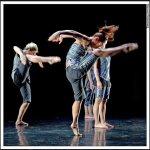 Rabbi Hillel? Really? According to a number of sources that you’d expect to have had decent fact-checkers—like O Magazine and Anne Lamott’s Bird By Bird—Rabbi Hillel wrote the following bit of Zen:
Rabbi Hillel? Really? According to a number of sources that you’d expect to have had decent fact-checkers—like O Magazine and Anne Lamott’s Bird By Bird—Rabbi Hillel wrote the following bit of Zen:
“I get up. I walk. I fall down. Meanwhile, I keep dancing.”
I was so charmed by this saying when I first encountered it, in Bird By Bird, that I copied it and tacked it to the wall above my desk. Nevertheless—and with great respect for Anne Lamott, whose wisdom has helped me survive many a writing meltdown—I have trouble believing that Rabbi Hillel said anything of the kind.
In case you’re not familiar with Rabbi Hillel, he was the head of Palestinian Judaism in the first century. He’s often discussed in terms of his debates with a rival scholar, Shammai. Shammai took the rigorous, by the book approach; Hillel was more compassionate and invariably won their arguments.
It’s true that Hillel is known for wise sayings. Asked to teach the whole of Judaism while standing on one foot, he said: “That which is hateful to you, do not do to your neighbor. That is the whole Torah; the rest is commentary.” Another gem is: “If I am not for myself, who is for me? And if I am only for myself, what am I? And if not now, when?” This one generated some buzz last year, when the center of the Boston Bruins wrote it on his hockey stick.
And Hillel is known for practical as well as spiritual teachings: he invented the Hillel Sandwich, bitter herbs (and, in his time, meat) between two pieces of matzah, eaten at the Passover seder.
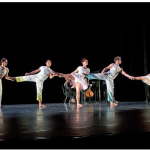 But “I get up. I walk. I fall down?” It doesn’t sound like the literary style of the man who wrote, “Whoever have acquired the the words of the Law has acquired the life of the world to come.” And, in a perusal of on-line information about Hill, the quote doesn’t appear.
But “I get up. I walk. I fall down?” It doesn’t sound like the literary style of the man who wrote, “Whoever have acquired the the words of the Law has acquired the life of the world to come.” And, in a perusal of on-line information about Hill, the quote doesn’t appear.
I’m apparently not the only one to doubt Rabbi Hillel’s authorship of this aphorism. In a Google search, it’s often attributed to “Daniel Hillel, American writer.” Look up “Daniel Hillel, writer,” though, and you get an Israeli scientist known for developing micro-irrigation techniques that have made the Negev Desert bloom. Like the first-century rabbi, Daniel Hillel has done a lot of good. In 2012, he won the World Food Prize. And he doesn’t just focus on science. One of his books is The Rivers of Eden: The Struggle for Water and the Quest for Peace in the Middle East.
Still, it’s hard to believe the author of Environmental Soil Physics wrote the Zen-like dancing comment. So who did? I considered Marianne Williamson, the real author of an inspirational message often attributed to Nelson Mandela: “We ask ourselves, who am I to be brilliant, gorgeous, etc.”—remember that one?
I did find a graphic image of the dancing quote where it was attributed to Hillel Goldberg, a Colorado rabbi and author. There are quite a few Buddhist Jews in Colorado, so Rabbi Goldberg is my best bet.
But I’m still waiting for proof of the real author. Meanwhile, I keep dancing.
Thanks to Manny Rotenberg for allowing me to use some of his beautiful dance photos … and for sharing the lyrics of this Yiddish song: “Sha! Shtil! Der rebbe tanzt” - Shh!, Quiet! The rabbi’s dancing!
August 26, 2014
Rabbi Lawrence Kushner: A Dance Review
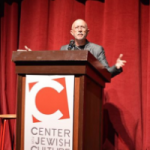 Rabbi Lawrence Kushner doesn’t bill himself as a dancer, and I didn’t go to see him Sunday in my role as a dance critic. But the rabbi’s got moves!
Rabbi Lawrence Kushner doesn’t bill himself as a dancer, and I didn’t go to see him Sunday in my role as a dance critic. But the rabbi’s got moves!
Rabbi Kushner was giving a talk in San Diego titled “Jewish Spirituality: It’s All God.” I was interested because I’ve read and loved several of his books, especially God was in this Place & I, i did not know, a multi-faceted riff on Jacob’s dream of the ladder between heaven and earth; it was one of a handful of key books and events that reconnected me with Judaism 20 years ago.
By the way, this is not the When Bad Things Happen to Good People Rabbi Kushner; that’s Harold. Rabbi Lawrence Kushner writes about Jewish mysticism with what feels like a Zen sensibility. His 17 titles include Eyes Remade for Wonder and I’m God; You’re Not: Observations on Organized Relation and Other Disguises of the Ego. You can hear him on the “On Being” radio show, talking about “Kabbalah and the Inner Life of God.”
 Having encountered Rabbi Kushner’s graceful wisdom and gentle humor on the page, I wasn’t surprised that he spoke in the tradition of Hassidic masters, teaching by telling stories. But I had no idea that he would dance his talk. As he spoke about how everything is connected, his hands wove filigrees in front of his face. He often spread his arms like wings; it’s a gesture any dancer recognizes as breath-expanding and heart-opening.
Having encountered Rabbi Kushner’s graceful wisdom and gentle humor on the page, I wasn’t surprised that he spoke in the tradition of Hassidic masters, teaching by telling stories. But I had no idea that he would dance his talk. As he spoke about how everything is connected, his hands wove filigrees in front of his face. He often spread his arms like wings; it’s a gesture any dancer recognizes as breath-expanding and heart-opening.
There was a lovely fluidity to his movements, a quality you see in people who practice contact improvisation or the Israeli form Gaga. What a perfect illustration of how everything is connected: heart, mind, body. And the connection involved not just his heart, body and mind, but ours.
It’s believed that watching other people move stimulates the muscles and nerves we’d use to make those movements in our own bodies. This phenomenon is called “kinesthetic empathy.” So when Rabbi Kushner winged out his arms, it created more space for our hearts and breath. We had new neural networks spinning as his hands described calligraphy in the air.
I thought of Rabbi Kushner’s guffaw-inducing tales as holy shtick, hilarious yet profound. And his dancing was Baryshnikov meets the Baal Shem Tov.
June 17, 2014
Yikes, I’ve Been Studied!
 I had no idea I was “mak(ing) clear how well popular culture can entertain nostalgia, trivialize history, and relieve, without really working through, the traumas of the past.” Turns out that’s what Laurence Roth, a professor of English and director of the Jewish Studies program at Susquehanna University, wrote about a mystery story of mine. Roth’s very cool “Inspecting Jews: American Jewish Detective Stories” came out from Rutgers University Press in 2004. I became aware of it just two weeks ago, through one of those delightful chains of connection that sometimes happen in life.
I had no idea I was “mak(ing) clear how well popular culture can entertain nostalgia, trivialize history, and relieve, without really working through, the traumas of the past.” Turns out that’s what Laurence Roth, a professor of English and director of the Jewish Studies program at Susquehanna University, wrote about a mystery story of mine. Roth’s very cool “Inspecting Jews: American Jewish Detective Stories” came out from Rutgers University Press in 2004. I became aware of it just two weeks ago, through one of those delightful chains of connection that sometimes happen in life.
My short story, “Wailing Reed,” involves a missing klezmer musician, a young clarinetist for a group I named Klezmania. An older man, a dealer in rare klezmer recordings, asks detective Margo Simon to search for him. The story was published in the collection “Mystery Midrash,” edited by Lawrence W. Raphael.
I was inspired to write the story by my love of klezmer, the wild and crazy music of Eastern European Jews. Back when immigrants were all assimilating, klezmer became one of the strands of American jazz via cats like Benny Goodman and Artie Shaw. More recently, there’s been a klezmer revival featuring amazing groups like the Klezmatics, the Klezmer Conservatory Band, Brave Old World, Kol Simcha, and, in San Diego, Yale Strom and Hot Pstromi. (If you want to know more about klezmer, check out Ari Davidow’s Klezmer Shack.)
 I became aware of klezmer for the first time in the early 1980′s, when I heard the Big Jewish Band, led by Ron Robboy. At least, I think that was the first time I heard klezmer. But I felt like I was hearing a long-lost tune, my earliest lullaby. The music grabbed my soul in its fist, and I remember sitting in the audience trying not to sob. BTW, my story opens, “Just because klezmer music made her cry … ”
I became aware of klezmer for the first time in the early 1980′s, when I heard the Big Jewish Band, led by Ron Robboy. At least, I think that was the first time I heard klezmer. But I felt like I was hearing a long-lost tune, my earliest lullaby. The music grabbed my soul in its fist, and I remember sitting in the audience trying not to sob. BTW, my story opens, “Just because klezmer music made her cry … ”
Ron’s path and mine have crossed over the years. He called after he read “The Tin Horse” because he grew up in L.A. and had relatives who’d lived in Boyle Heights. Last week, he called and told me about “Inspecting Jews.” Thanks to the magic of the internet, I found the book and ordered it that day.
“Inspecting Jews” is a fascinating book. Roth takes genre fiction with the seriousness it deserves. He coins the phrase “kosher hybridity” to talk about, as I understand it, a mix of past and present, Jewish and American culture, and “imperfectly remembered Torah.” There are sections on gender (discussing Harry Kemelman and Faye Kellerman), memory, and “alterity” – Jewish otherness.
The section on memory is where he writes about “Wailing Reed,” with its focus on the klezmer revival and rare recordings. He frames the discussion in terms of the commodification of memory, the way we use objects “to put (our) hands physically on the past and take hold of its aura.” And he brings in the intriguing notion of postmemory, a concept developed by Marianne Hirsch, in which people “recollect” a past they haven’t personally experienced but nevertheless connect to deeply through stories, objects, and their imaginations … and where there’s the danger that this imagined past can be distorted.
Writing about “Wailing Reed” and postmemory, Roth says, “By using klezmer as a touchstone for the East European Jewish past, Steinberg’s short story asks readers to consider the mysteries of that past’s emotional and commercial tangibility. Klezmer, as an example of postmemory about Eastern European Jewish life, and as one of the sales champs of the American Jewish popular arts, is a perfect target for criticizing the romanticization and commercialization of the Ashkenazi culture to which klezmer gives voice, literally.”
I can’t say I did any of that consciously! But writing fiction is so intuitive, that to the extent any of those ideas were swirling in my awareness, they bubbled into my characters and the story. Though I also like the idea that none of what Roth sees was even remotely in my mind, and he’s done a jazz-like riff on what I wrote.
One of my favorite pieces of the four pages Roth devotes to the story (almost as long as the story itself!) is this comment about Margo’s visit to a club – part of her search for the missing clarinetist, who also plays in a punk-rock band. Despite feeling impossibly old (in her late 30s) to be there, she ends up liking the music, “an interesting if sometimes weird hybrid of rock and jazz, just as Klezmania’s music combined traditional and modern influences.” That quote is from the story, and I suspect it’s only partly coincidental that I used the word “hybrid” and hybridity is a cornerstone for Roth’s analysis. About this incident, he writes:
“The appeal of both contemporary youth music and the klezmer revival is their weird hybridity, their mixing of dissimilar but not dissonant sounds from the past and from the present. The result is neither nostalgia nor an over-hip smugness, but rather emotionally accessible music that, in the case of Klezmania, is capable of making Simon cry.”
BTW, there’s a good reason Roth particularly appreciated Margo’s response to the punk band. It says in his bio that he was a ”guitarist and songwriter in several bands on the L.A. post-punk club circuit” and he still performs with a group with the great name Faculty Lounge.
It’s an amazing experience to hear from someone who’s read my work with care and attention. Any time that happens, it’s a gift. But discovering Roth’s extraordinary engagement with my story is like getting a carload of gifts… all of them exactly what I hoped for. Thank you, Laurence Roth, for your deep attention in “Inspecting Jews.” And thanks, Ron Robboy, for telling me about this wonderful book – and for making music that brought me to tears.
May 6, 2014
Blog Tour Goes to Cafe Bassam and Nia Class
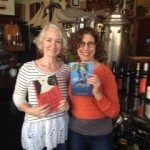 Thank you to J. Dylan Yates, who invited me to follow her on this blog tour. Dylan’s first novel came out just a week ago! Called “The Belief in Angels,” it’s about a young woman growing up in her parents’ wild-hippie household … and fascinated by the stories of her grandfather, a Jewish Holocaust survivor. Dylan and I recently took our blog tour to Cafe Bassam in the Hillcrest neighborhood of San Diego. You can find out more about Dylan and her book here.
Thank you to J. Dylan Yates, who invited me to follow her on this blog tour. Dylan’s first novel came out just a week ago! Called “The Belief in Angels,” it’s about a young woman growing up in her parents’ wild-hippie household … and fascinated by the stories of her grandfather, a Jewish Holocaust survivor. Dylan and I recently took our blog tour to Cafe Bassam in the Hillcrest neighborhood of San Diego. You can find out more about Dylan and her book here.
Doing the tour involves answering four questions, which puts me in mind of the Passover seder.
1. What am I working on? I’m about 200 pages into a new novel, “Tower of Song.” The name is the title of a song by the brilliant, mordant Leonard Cohen. Cohen’s “Tower of Song” is a funny-sad lament about aging, and aging is a theme of my book, which opens with the 50th birthday party of Aaron Rochman. Unlike “The Tin Horse,” which I wrote in the first person from Elaine’s point of view, each member of Aaron’s California Jewish family gets chapters in which we see life through his or her eyes. There’s Aaron, his parents (who are divorced), and his son and daughter, in their twenties.
Another connection with the Leonard Cohen song is that there’s a line about being “born with the gift of a golden voice” – it’s ironic when Cohen croaks it out, but Aaron’s son, Rocky, really does have a golden voice; he’s been trying to make it as a singer-musician, but early in the book, he decides to go to cantorial school. The rest of his very secular family figures he’s just letting go of his pipe dream of stardom and choosing something more practical, but Rocky has found God. That’s just one of the complications I’m having fun with. In fact, my writers group tells me that this book is funny! I didn’t know I could do funny, so I am trying to get used to the idea.
2. How does my work differ from others of its genre? See, this really is like a seder – why is this night different from other nights? There are a lot of great Jewish family novels, but California Jewish family novels? This wasn’t anything I consciously considered when I started “The Tin Horse” – I just wanted write about a minor character in the detective novel “The Big Sleep,” a woman described as having the “fine-drawn face of an intelligent Jewess.” And, because “The Big Sleep” takes place in Los Angeles in the late 30s, my character had to live in that time and place. I had a sense of Jewish immigrant life in the 20s and 30s through fiction and through my family’s stories, but all of those take place “back East,” as we Californians call anywhere east of the Mississippi. (I was surprised when I moved here to learn that my hometown of Milwaukee was “back east.”)
 As I researched L.A.’s Jewish immigrant neighborhood of Boyle Heights, I realized that the Southern California Jewish experience – living in bungalows rather than tenements, having lemon and fig trees in the yard, having the Old Country not just an ocean but an ocean and a continent away – had a particular flavor and character. In my new book, members of the family live up and down the coast – in L.A., a San Diego beach community, the Central Coast, and the Bay area – and I’m doing more with uniquely California settings. (Photo is of jacaranda, which blooms here in April-May.)
As I researched L.A.’s Jewish immigrant neighborhood of Boyle Heights, I realized that the Southern California Jewish experience – living in bungalows rather than tenements, having lemon and fig trees in the yard, having the Old Country not just an ocean but an ocean and a continent away – had a particular flavor and character. In my new book, members of the family live up and down the coast – in L.A., a San Diego beach community, the Central Coast, and the Bay area – and I’m doing more with uniquely California settings. (Photo is of jacaranda, which blooms here in April-May.)
3. Why do I write what I do? This question suggests that there’s a choice, that I could be writing something else. But I’m not one of those writers who has a file of 80 ideas and needs to pick one. One idea grabs me at a time, but it really grabs hard.
4. How does my writing process work? I start by creating a diary for the book, where I put down ideas about characters and relationships, story, research needs, etc. There’s always something to research, and I do some of that before I write anything. At a certain point, I’ll hear the first sentence in my mind. That sentence may not survive as the opening – it didn’t in “The Tin Horse” – but it gets me going. I write in chapters rather than scenes, and I’m a linear writer – I do chapters in the order in which I see them appearing. At times, I do go back and rework an earlier chapter; often, that’s based on getting feedback from my writers’ group and realizing I need to go more deeply into a particular character from the beginning.
Writing habits: My peak creative time is first thing in the morning. When I was writing “The Tin Horse” and juggling a lot of other projects, I’d set a timer for an hour or two, as much time as I could carve out, and make that my sacred writing time. And I mean sacred – if I got up to use the bathroom, I stopped the timer. I’ve always been a keyboard person – I wrote my first story at age 7 when I learned to hunt and peck on the typewriter – and I write primarily on the computer. When I get stuck, though, I find it useful to pick up a pen (a fountain pen, black ink) and handwrite; I think it engages somewhat different neural pathways.
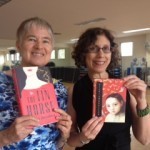 Next stop on the tour is Carolyn Marsden. Carolyn is the author of 14 novels for young adults and/or middle grade readers. Her books take the reader on a journey to countries and cultures around the world – including Thailand, Iraq, and Czechoslovakia under Communist rule. Carolyn is also a visual artist, and her work is marked by vivid, poetic images. I have the privilege of getting to swim in this evocative language, since Carolyn is a member of my writers group. She’s also one of my Nia students, and we took this photo before class.
Next stop on the tour is Carolyn Marsden. Carolyn is the author of 14 novels for young adults and/or middle grade readers. Her books take the reader on a journey to countries and cultures around the world – including Thailand, Iraq, and Czechoslovakia under Communist rule. Carolyn is also a visual artist, and her work is marked by vivid, poetic images. I have the privilege of getting to swim in this evocative language, since Carolyn is a member of my writers group. She’s also one of my Nia students, and we took this photo before class.
Blog Tour: What I’m Up To, California Jewish Novels, and Writing Process
 Thank you to J. Dylan Yates, who invited me to follow her on this blog tour. Dylan’s first novel came out just a week ago! Called “The Belief in Angels,” it’s about a young woman growing up in her parents’ wild-hippie household … and fascinated by the stories of her grandfather, a Jewish Holocaust survivor. You can find out more about Dylan and her book here.
Thank you to J. Dylan Yates, who invited me to follow her on this blog tour. Dylan’s first novel came out just a week ago! Called “The Belief in Angels,” it’s about a young woman growing up in her parents’ wild-hippie household … and fascinated by the stories of her grandfather, a Jewish Holocaust survivor. You can find out more about Dylan and her book here.
Doing the tour involves answering four questions, which puts me in mind of the Passover seder.
1. What am I working on? I’m about 200 pages into a new novel, “Tower of Song.” The name is the title of a song by the brilliant, mordant Leonard Cohen. Cohen’s “Tower of Song” is a funny-sad lament about aging, and aging is a theme of my book, which opens with the 50th birthday party of Aaron Rochman. Unlike “The Tin Horse,” which I wrote in the first person from Elaine’s point of view, each member of Aaron’s California Jewish family gets chapters in which we see life through his or her eyes. There’s Aaron, his parents (who are divorced), and his son and daughter, in their twenties.
Another connection with the Leonard Cohen song is that there’s a line about being “born with the gift of a golden voice” – it’s ironic when Cohen croaks it out, but Aaron’s son, Rocky, really does have a golden voice; he’s been trying to make it as a singer-musician, but early in the book, he decides to go to cantorial school. The rest of his very secular family figures he’s just letting go of his pipe dream of stardom and choosing something more practical, but Rocky has found God. That’s just one of the complications I’m having fun with. In fact, my writers group tells me that this book is funny! I didn’t know I could do funny, so I am trying to get used to the idea.
2. How does my work differ from others of its genre? See, this really is like a seder – why is this night different from other nights? There are a lot of great Jewish family novels, but California Jewish family novels? This wasn’t anything I consciously considered when I started “The Tin Horse” – I just wanted write about a minor character in the detective novel “The Big Sleep,” a woman described as having the “fine-drawn face of an intelligent Jewess.” And, because “The Big Sleep” takes place in Los Angeles in the late 30s, my character had to live in that time and place. I had a sense of Jewish immigrant life in the 20s and 30s through fiction and through my family’s stories, but all of those take place “back East,” as we Californians call anywhere east of the Mississippi. (I was surprised when I moved here to learn that my hometown of Milwaukee was “back east.”)
As I researched L.A.’s Jewish immigrant neighborhood of Boyle Heights, I realized that the Southern California Jewish experience – living in bungalows rather than tenements, having lemon and fig trees in the yard, having the Old Country not just an ocean but an ocean and a continent away – had a particular flavor and character. In my new book, members of the family live up and down the coast – in L.A., a San Diego beach community, the Central Coast, and the Bay area – and I’m doing more with uniquely California settings. (Photo is of jacaranda, which blooms here in April-May.)
3. Why do I write what I do? This question suggests that there’s a choice, that I could be writing something else. But I’m not one of those writers who has a file of 80 ideas and needs to pick one. One idea grabs me at a time, but it really grabs hard.
4. How does my writing process work? I start by creating a diary for the book, where I put down ideas about characters and relationships, story, research needs, etc. There’s always something to research, and I do some of that before I write anything. At a certain point, I’ll hear the first sentence in my mind. That sentence may not survive as the opening – it didn’t in “The Tin Horse” – but it gets me going. I write in chapters rather than scenes, and I’m a linear writer – I do chapters in the order in which I see them appearing. At times, I do go back and rework an earlier chapter; often, that’s based on getting feedback from my writers’ group and realizing I need to go more deeply into a particular character from the beginning.
Writing habits: My peak creative time is first thing in the morning. When I was writing “The Tin Horse” and juggling a lot of other projects, I’d set a timer for an hour or two, as much time as I could carve out, and make that my sacred writing time. And I mean sacred – if I got up to use the bathroom, I stopped the timer. I’ve always been a keyboard person – I wrote my first story at age 7 when I learned to hunt and peck on the typewriter – and I write primarily on the computer. When I get stuck, though, I find it useful to pick up a pen (a fountain pen, black ink) and handwrite; I think it engages somewhat different neural pathways.
Next stop on the tour is Carolyn Marsden. Carolyn is the author of 14 novels for young adults and/or middle grade readers. Her books take the reader on a journey to countries and cultures around the world – including Thailand, Iraq, and Czechoslovakia under Communist rule. Carolyn is also a visual artist, and her work is marked by vivid, poetic images. I have the privilege of getting to swim in this evocative language, since Carolyn is a member of my writers group.
April 17, 2014
Now Read This! “The Knife-Sharpener’s Bell” by Rhea Tregebov
Everyone’s a critic. Especially me. I write dance criticism. And, as a novelist and writing teacher, I’ve made an art of picking apart the most heartfelt, lovingly crafted prose. All of which means that when I read a novel by a friend, it’s like walking onto a minefield. What if I don’t like the book? Not that I’d ever come out and say it; I wouldn’t have to, for a heaviness – my disappointment and guilt for being disappointed, my friend’s detection of a lack of conviction in my praise – to afflict our most casual contacts. Go out for tea together? Why not just make it a glass of cyanide?
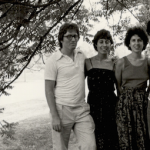 Just so you know how fraught it was for me to read “The Knife Sharpener’s Bell” by Rhea Tregebov. I met Rhea in the mid-1970s on a visit to Cornell, where she was going to school. We clicked immediately and stayed in touch for several years; this pic is from when Jack and I visited her in Toronto in 1981. (She’s on the right.) We shared news of our publications, in her case poetry and a picture book for kids. Then time passed, and we lost touch. Thanks to Facebook, we reconnected a few months ago, and I found out she had a novel, ”The Knife Sharpener’s Bell.” I bought it on Kindle and – with excitement and trepidation – started to read.
Just so you know how fraught it was for me to read “The Knife Sharpener’s Bell” by Rhea Tregebov. I met Rhea in the mid-1970s on a visit to Cornell, where she was going to school. We clicked immediately and stayed in touch for several years; this pic is from when Jack and I visited her in Toronto in 1981. (She’s on the right.) We shared news of our publications, in her case poetry and a picture book for kids. Then time passed, and we lost touch. Thanks to Facebook, we reconnected a few months ago, and I found out she had a novel, ”The Knife Sharpener’s Bell.” I bought it on Kindle and – with excitement and trepidation – started to read.
 The Gershons are a Jewish immigrant family in Winnipeg, their lives seen through the eyes of their daughter, Annette, who’s eight when the novel begins in the mid-1930s. Like all immigrants, Annette’s parents are full of dreams, though their dreams are unusual: dedicated left-wingers, they want to return to Ukraine and build the workers’ revolution. But no one went back to eastern Europe! And I looked forward to reading an immigrant story with a Canadian twist, told with Rhea’s poetic language. (She’s a prize-winning poet.)
The Gershons are a Jewish immigrant family in Winnipeg, their lives seen through the eyes of their daughter, Annette, who’s eight when the novel begins in the mid-1930s. Like all immigrants, Annette’s parents are full of dreams, though their dreams are unusual: dedicated left-wingers, they want to return to Ukraine and build the workers’ revolution. But no one went back to eastern Europe! And I looked forward to reading an immigrant story with a Canadian twist, told with Rhea’s poetic language. (She’s a prize-winning poet.)
The Gershons do, however, return to their native Odessa in this surprising, original novel. Against the backdrop of great historic events – the romance of Communism, harrowing episodes in World War II, and eventual disillusion with the Soviet state – Annette grows to be a forthright young woman, a budding architect whose passion for her art provides some of the book’s loveliest writing: “Since I was small, I’ve been hunting something in buildings: rightness, wholeness. … I don’t believe it’s just petit-bourgeous aestheticism, this craving for beauty, for integrity. If these human structures are made carelessly, made ugly, how do they honor the people who live among them? Why shouldn’t we love what we’ve made, why shouldn’t we take care making it?”
This novel is made with great love and skill, the characters textured and engaging. And the writing gleams with a poet’s compact, gemlike imagery, with just one exception–the title. “The Knife-Sharpener’s Bell” refers to the sound made by a knife-grinder when Annette was a child, that filled her with fear. The image didn’t resonate as I think it was intended to, but that’s a small quibble with this deeply realized novel.
March 19, 2014
Did you get to choose your book cover? Well, sort of…
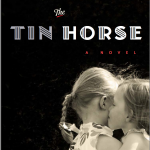 “It’s an uneasy embrace,” my editor kept saying when I voiced reservations about the first cover Random House proposed for “The Tin Horse.” Granted, I said, the photograph of two little girls hugging conveyed both closeness and tension, an ambivalence that felt just right for Elaine and Barbara, the sisters in my book. On the other hand, Elaine and Barbara are Jewish, and I’d described them as having dark wavy hair. Didn’t it seem wrong that the girls in the photo had blond straight hair? “Yeah,” my editor said. “But look at the uneasy embrace.”
“It’s an uneasy embrace,” my editor kept saying when I voiced reservations about the first cover Random House proposed for “The Tin Horse.” Granted, I said, the photograph of two little girls hugging conveyed both closeness and tension, an ambivalence that felt just right for Elaine and Barbara, the sisters in my book. On the other hand, Elaine and Barbara are Jewish, and I’d described them as having dark wavy hair. Didn’t it seem wrong that the girls in the photo had blond straight hair? “Yeah,” my editor said. “But look at the uneasy embrace.”
Often, people ask if I chose my cover. After all, it’s my book, my baby – don’t I get to dress it? Here’s a “what is behind that curtain” look at how my cover was chosen. Actually, covers, plural, since there are now four different versions for which covers have been created: U.S. (which was also used by the French publisher), Italian, German, and Dutch. (Also in the works are Brazilian, Spanish, and Japanese.)
behind that curtain” look at how my cover was chosen. Actually, covers, plural, since there are now four different versions for which covers have been created: U.S. (which was also used by the French publisher), Italian, German, and Dutch. (Also in the works are Brazilian, Spanish, and Japanese.)
My contract with Random House said I could “review” the cover. And I did get to look at cover designs. But a lot of wheels, and they’re very large wheels, get set in motion when a publisher unveils a cover. When I balked … well, imagine those wheels trying to squeal to a stop. That may sound like an outrage, but consider that this was a decision being made at a huge corporation, and multiple departments – art, editorial, marketing – had a stake in it. And it was a decision about which the professionals knew far better than I what kind of cover would stand out. Still … I asked if the image couldn’t at least be photoshopped to give them dark curly hair.
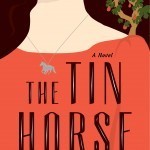 Fortunately, the marketing department came to my rescue on the first cover. They thought it looked too dark. And, once marketing gave it a thumbs-down, the art department started over and came up with the vivid cover that pleased everyone, including me.
Fortunately, the marketing department came to my rescue on the first cover. They thought it looked too dark. And, once marketing gave it a thumbs-down, the art department started over and came up with the vivid cover that pleased everyone, including me.
As for covers in other countries… First, to clarify: Many people assume that Random House sells the book to publishers elsewhere and is involved in putting out those editions. Uh-uh. My agent, working with colleagues in other countries, sells foreign rights. I have individual contracts with those publishers, and sometimes they invite me to comment on things – in some cases, surprising things. The Brazilian publisher, for instance, kindly sent me the Portuguese translation of the book. Which was cool, but, despite being a fan of bossa nova, I don’t know any Portuguese.
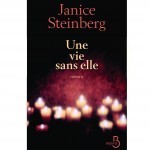 The French publisher, Belfond, did ask about the cover. They’d come up with a cluster of votive candles that looked, um, Catholic to me. I brought that up with the foreign rights person in my agent’s office, but remember those massive wheels? They turn at publishing houses worldwide. I was told that French readers would see the candles and not have any religious associations. (What do you think?) This time, my agent found the cover too dark, and Belfond went with the Random House cover.
The French publisher, Belfond, did ask about the cover. They’d come up with a cluster of votive candles that looked, um, Catholic to me. I brought that up with the foreign rights person in my agent’s office, but remember those massive wheels? They turn at publishing houses worldwide. I was told that French readers would see the candles and not have any religious associations. (What do you think?) This time, my agent found the cover too dark, and Belfond went with the Random House cover.
 The Italian and German covers feel right for their respective countries, at least for my ideas of those countries: the Italian chic, and the German, with its evidently conjoined twins, one of them quite sour-faced, reminding me of German expressionist art. By the way, you may notice the title has never stayed “The Tin Horse.” The German and Dutch versions come close, with titles that translate as “The Tin Menagerie” (German) and “The Tin Pony” (Dutch). But the Italian is “The Lying Sister.” The French edition with the candles was called “A Life Without Her,” but when they went with the bright U.S. cover, they chose “The Beautiful Promises.”
The Italian and German covers feel right for their respective countries, at least for my ideas of those countries: the Italian chic, and the German, with its evidently conjoined twins, one of them quite sour-faced, reminding me of German expressionist art. By the way, you may notice the title has never stayed “The Tin Horse.” The German and Dutch versions come close, with titles that translate as “The Tin Menagerie” (German) and “The Tin Pony” (Dutch). But the Italian is “The Lying Sister.” The French edition with the candles was called “A Life Without Her,” but when they went with the bright U.S. cover, they chose “The Beautiful Promises.”
 The latest cover, from the Dutch publisher, Artemis, arrived via e-mail a few days ago , and wow! My friend Joan Ganny, who lives in Amsterdam, calls it “een blikvanger,” an eye catcher. I love it that the girls’ faces are warm and beautiful and draw me in, yet they’re kept from looking too sweet by the startling composition and the girls’ direct, unsmiling gazes – as if they’re taking in the world and deciding what they think of it, just as I imagined Elaine and Barbara doing.
The latest cover, from the Dutch publisher, Artemis, arrived via e-mail a few days ago , and wow! My friend Joan Ganny, who lives in Amsterdam, calls it “een blikvanger,” an eye catcher. I love it that the girls’ faces are warm and beautiful and draw me in, yet they’re kept from looking too sweet by the startling composition and the girls’ direct, unsmiling gazes – as if they’re taking in the world and deciding what they think of it, just as I imagined Elaine and Barbara doing.
March 3, 2014
Pioneer Jews
 My nominee for one of the most intriguing book titles ever is “Pioneer Jews.” It is not an oxymoron! As this deeply researched, terrifically readable history by Harriet and Fred Rochlin makes clear, Jewish immigrants to America in the 19th century didn’t just settle in New York or Chicago. Many followed the great migration to the West. Jews rode the range on cattle ranches – I kid you not, one of my favorite features in the book is a two-page spread of cattle brands used by Jewish ranchers. Jews wore lawmen’s badges – Emil Harris was a Los Angeles police chief known who, the Rochlins write, “captured bank robbers, solved murders and larcenies, controlled the flourishing opium dens and brothels, and cracked down on juvenile delinquency.”
My nominee for one of the most intriguing book titles ever is “Pioneer Jews.” It is not an oxymoron! As this deeply researched, terrifically readable history by Harriet and Fred Rochlin makes clear, Jewish immigrants to America in the 19th century didn’t just settle in New York or Chicago. Many followed the great migration to the West. Jews rode the range on cattle ranches – I kid you not, one of my favorite features in the book is a two-page spread of cattle brands used by Jewish ranchers. Jews wore lawmen’s badges – Emil Harris was a Los Angeles police chief known who, the Rochlins write, “captured bank robbers, solved murders and larcenies, controlled the flourishing opium dens and brothels, and cracked down on juvenile delinquency.”
As a reviewer wrote in the Chicago Sun-Times when “Pioneer Jews” first came out in 1984, “When people think of the Jewish immigrant experience, it’s usually the Lower East Side of New York that comes to mind. But, in fact, thousands of Jews lived in western mining towns and on ranches and trading posts in the late nineteenth century. In this colorful history of Jewish settlers in the West . . . that stereotype of the urban Jew is vigorously and even exuberantly rejected.”
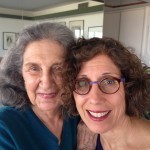 “Exuberance” is a quality that characterizes Harriet Rochlin herself. I read “Pioneer Jews” when I started my research for “The Tin Horse” and discovered that Harriet had grown up in my novel’s setting, the Los Angeles neighborhood of Boyle Heights in the 1920s and 30s. I sent her a note: would she be willing to talk to me? She generously shared her time, information, and enthusiasm. She was a wonderful source of information, offering both the you-are-there immediacy of having lived in Boyle Heights and the historian’s skill of seeing things in a larger perspective. And, despite being busy with her own book projects, she always responded promptly and thoroughly to questions I emailed her. She even shared her family photographs for my video; the shot of two girls, when I talk about Elaine and Barbara, is actually a photo of Harriet and her sister!
“Exuberance” is a quality that characterizes Harriet Rochlin herself. I read “Pioneer Jews” when I started my research for “The Tin Horse” and discovered that Harriet had grown up in my novel’s setting, the Los Angeles neighborhood of Boyle Heights in the 1920s and 30s. I sent her a note: would she be willing to talk to me? She generously shared her time, information, and enthusiasm. She was a wonderful source of information, offering both the you-are-there immediacy of having lived in Boyle Heights and the historian’s skill of seeing things in a larger perspective. And, despite being busy with her own book projects, she always responded promptly and thoroughly to questions I emailed her. She even shared her family photographs for my video; the shot of two girls, when I talk about Elaine and Barbara, is actually a photo of Harriet and her sister!
Over the eight years in which I worked on “The Tin Horse,” Harriet has become a friend and treasured role model. From everything she’s told me about Fred’s joie de vivre and creativity, I’m so sorry that I didn’t have the chance to meet him; he passed away in 2002.
Harriet has just completed exhaustive work to update the rights information for the 219 historical photos in the book and has released a new edition of this outstanding book. Here’s where you can buy it!



